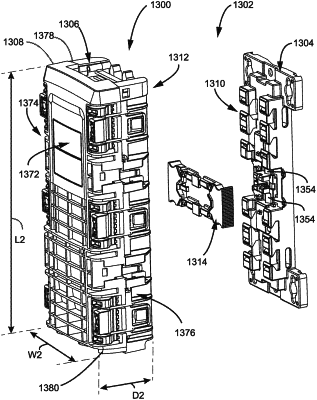| CPC G02B 6/4452 (2013.01) | 20 Claims |

|
1. A telecommunications enclosure system comprising:
a terminal assembly including:
a terminal mounting bracket;
an optical terminal including a housing for enclosing optical components, the housing including at least one optical port, the housing including a front side and a rear side, the housing being configured to mount to the terminal mounting bracket with the rear side of the housing facing toward the terminal mounting bracket and the front side facing away from the terminal mounting bracket;
a mechanical coupling interface defined between the rear side of the housing and a front side of the terminal mounting bracket for securing the optical terminal to the terminal mounting bracket, the mechanical coupling interface being configurable in a retention state in which the housing is locked in place with respect to the terminal mounting bracket and a release state in which the housing is removable from the terminal mounting bracket; and
a release actuator accessible from first and second opposite sides of the terminal assembly for actuating the mechanical coupling interface from the retention state to the release state, wherein the mechanical coupling interface can be actuated from the retention state to the release state by accessing the release actuator from the first side without requiring the release actuator to be accessed from the second side, and wherein the mechanical coupling interface can be actuated from the retention state to the release state by accessing the release actuator from the second side without requiring the release actuator to be accessed from the first side.
|